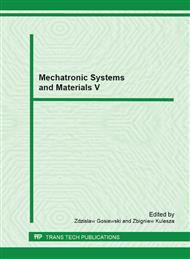p.159
p.165
p.170
p.176
p.182
p.188
p.194
p.200
p.205
The Influence of Oil Ageing on the Change of Viscosity and Lubricity of Engine Oil
Abstract:
The report includes results of the study on the change of viscosity and lubricity of engine oil used in the two HEROS' harbour tug Caterpillar CAT3516DITA main engines, both with the similar amount of working hours. Each of the engines has a nominal power of 1421kW and usually works between 650 and 1800rpm. The examinated oil is a product of the Fuchs Oil Corporation, named Titan Truck Plus 1540, which meets the requirements of SAE 15W-40. The ageing of engine oil causes the change of its dynamic viscosity value. That change has effect on the process of lubrication and the wearing of slide journal bearings. The aim of this work is to evaluate the changes of viscosity and lubricity values of engine oil in the time of its exploitation. The changes of the viscosity and lubricity of engine oil were observed at specified intervals, between the oil changes. The results of the study are presented as the characteristics of viscosity and time in various temperatures and the shear rates. The measurements of the viscosity were made on the Haake Mars III rheometer, with the shear rates up to 200 1/sec and in the range of temperatures between-10°C to +120°C. This paper also includes information on the analysis of wear products, contaminants and additives in the investigated oil was made with the rotating disc electrode atomic emission spectrometer Spectro Incorporated Spectroil Q100. The Spectroil Q100 spectrometer can detect up to 22 different chemical elements that most often occur in the motor oil additives, contaminants and wear products. The lubricity of the examinated was measured on the T02-U four-ball tester.
Info:
Periodical:
Pages:
182-187
Citation:
Online since:
March 2013
Authors:
Price:
Сopyright:
© 2013 Trans Tech Publications Ltd. All Rights Reserved
Share:
Citation:


